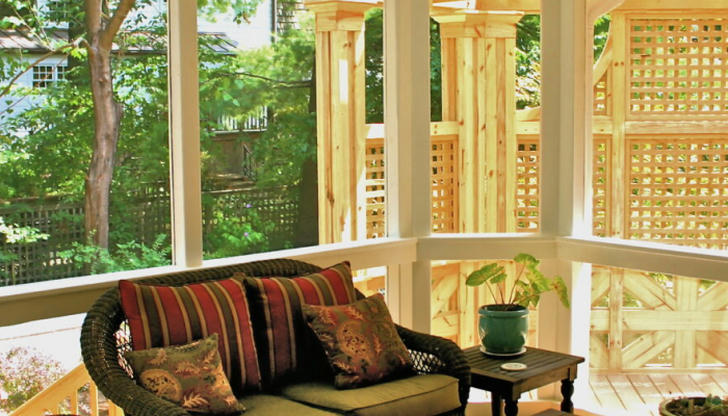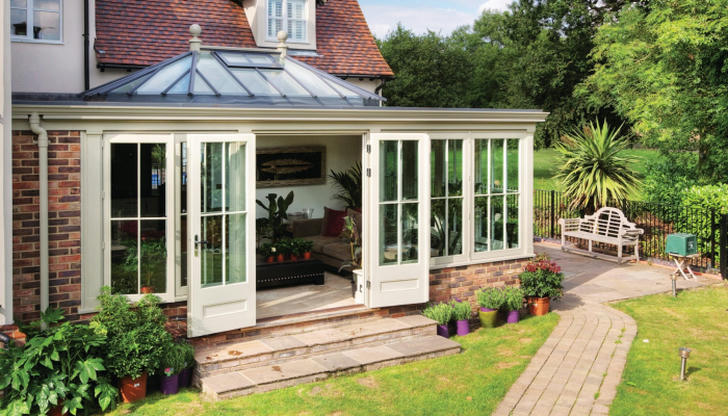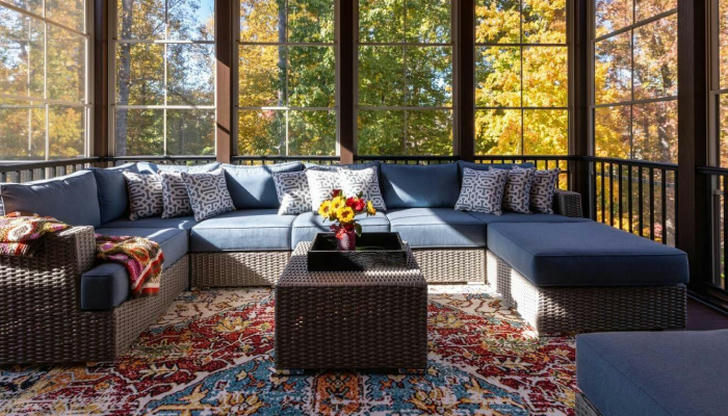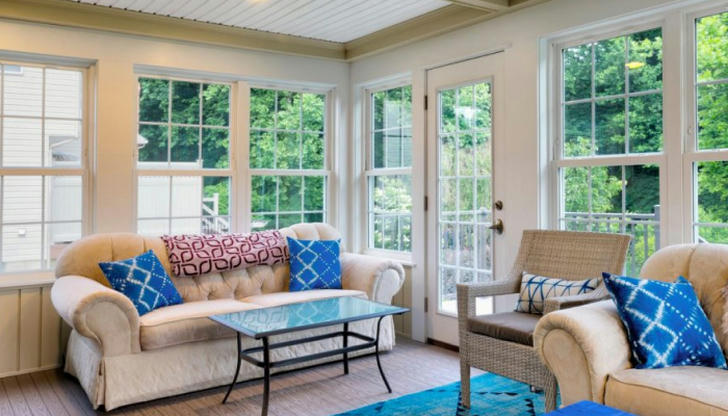Understanding Sunrooms: A Comprehensive Guide
Sunrooms, also known as solariums or conservatories, are specialized additions that blend indoor and outdoor living by allowing natural light to flood in through large windows or glass panels. They offer a versatile space for relaxation, gardening, or entertaining guests. This guide explores the types of sunrooms available, their costs, installation considerations, design options, maintenance needs, and real-world examples of how they enhance daily life.

Types of Sunrooms
1. Three-Season vs. Four-Season Sunrooms
Sunrooms can be categorized based on their usability throughout the year:
Three-Season Sunrooms:
Designed for use during spring, summer, and fall, these structures feature less insulation and heating capabilities. They provide ample sunlight and ventilation but may not be comfortable in colder winter months.
Four-Season Sunrooms:
Built to withstand all four seasons, including winter, these sunrooms incorporate advanced insulation, HVAC systems, and sometimes radiant floor heating. This makes them suitable for year-round enjoyment regardless of external weather conditions.
Case Study:
The Thompson Family's Four-Season Escape: The Thompsons, residing in upstate New York, installed a four-season sunroom with double-glazed windows and radiant floor heating. This allowed them to enjoy their garden views even during harsh winters, creating a cozy retreat for family gatherings.
2. Traditional vs. Contemporary Styles
In terms of design aesthetics, sunrooms come in various styles:
Traditional Style:
Characterized by ornate details such as arched windows, decorative moldings, and classical architecture elements. Ideal for homes with a more formal or historic appearance.
Contemporary Style:
Emphasizes clean lines, minimalism, and modern materials like steel and glass. Perfect for those who prefer a sleek, up-to-date look that complements contemporary architecture.
Case Study:
The Greenes' Modern Oasis: The Greene family in Los Angeles opted for a contemporary-style sunroom with large sliding glass doors and minimalist frames. This addition seamlessly connected their indoor living space with an expansive backyard, perfect for hosting poolside parties.
3. Traditional vs. Contemporary Styles
In terms of design aesthetics, sunrooms come in various styles:
Traditional Style:
Characterized by ornate details such as arched windows, decorative moldings, and classical architecture elements. Ideal for homes with a more formal or historic appearance.
Contemporary Style:
Emphasizes clean lines, minimalism, and modern materials like steel and glass. Perfect for those who prefer a sleek, up-to-date look that complements contemporary architecture.
Case Study:
The Greenes' Modern Oasis: The Greene family in Los Angeles opted for a contemporary-style sunroom with large sliding glass doors and minimalist frames. This addition seamlessly connected their indoor living space with an expansive backyard, perfect for hosting poolside parties.

Cost Considerations
1. Initial Purchase Price
The cost of purchasing a sunroom varies widely depending on its size, type, materials used, and customization options. Generally speaking:
Three-Season Sunrooms:
Can range from 10,000to10,000to30,000.
Four-Season Sunrooms:
Typically start at around 25,000andcanexceed25,000andcanexceed50,000 for larger, highly customized models.
Materials play a significant role in determining price. For instance, vinyl frames tend to be more affordable compared to aluminum or wood, which offer greater durability and aesthetic flexibility.
Case Study:
The Johnsons' Budget-Friendly Addition: The Johnsons in Seattle chose a three-season vinyl-framed sunroom for about $18,000. This choice provided them with an affordable yet stylish extension to their home, enhancing their outdoor living experience without breaking the bank.
One common method of charging for window replacement is per unit pricing. Each window is priced individually based on size, material, style, and any additional features requested. This approach provides transparency and allows clients to make informed decisions about their investment. A couple in Vancouver found this pricing model helpful when deciding between different types of windows for their newly purchased house.
2. Installation Costs
Installation fees depend on several factors, including the complexity of the project, local labor rates, and any necessary site preparations (such as leveling the ground). On average, professional installation can add between 10% to 20% to the total cost of the sunroom. Additional expenses might include obtaining permits, utility connections, and landscaping adjustments.
Case Study:
The Millers' Comprehensive Renovation: The Millers in Chicago undertook a comprehensive renovation that included adding a four-season sunroom. With professional installation and additional landscaping, the total project cost was approximately $60,000. However, the added value to their property and enhanced lifestyle made it a worthwhile investment.

Design and Customization Options
1. Flooring Materials
Choosing the right flooring is crucial for both comfort and aesthetics. Popular options include:
Tile:
Durable and easy to clean, tile floors come in many colors and patterns, making it easy to match existing decor.
Wood:
Offers warmth and elegance, especially hardwood varieties like oak or maple. However, they require regular maintenance.
**Laminate:
A budget-friendly alternative that mimics the look of wood or stone without the upkeep.
Case Study:
The Browns' Cozy Corner: The Browns in Portland selected a warm oak laminate floor for their sunroom. This choice created a cozy, inviting atmosphere while keeping maintenance to a minimum, ideal for their young family.
2. Window and Roof Configurations
Windows and roofs are key components affecting natural light entry and insulation. Common configurations include:
Fixed Windows:
Provide maximum visibility and do not open, ensuring better energy efficiency.
Operable Windows:
Allow for ventilation and fresh air circulation, enhancing comfort during warmer months.
Sloped Roofs:
Help prevent water accumulation and improve drainage, ideal for areas with heavy rainfall.
Flat Roofs:
Offer a simpler design and can accommodate additional features like skylights or green roofs.
Case Study:
The Whites' Rainproof Retreat: The Whites in Vancouver chose a sloped roof for their sunroom to handle the city’s frequent rain. This decision ensured no water buildup, providing a dry and comfortable space year-round.
3. Heating and Cooling Solutions
Efficient heating and cooling systems are essential for year-round usability, especially in four-season sunrooms. Options vary from electric baseboard heaters and mini-split heat pumps to central HVAC integration. Proper insulation and double-glazed windows also contribute significantly to maintaining consistent temperatures.
Case Study:
The Blacks' Energy-Efficient Haven: The Blacks in Boston installed a mini-split heat pump system in their four-season sunroom. Combined with high-quality insulation, this setup maintained a comfortable temperature year-round, reducing energy bills and enhancing comfort.

Maintenance and Longevity
1. Routine Care
Maintaining your sunroom involves periodic cleaning of windows, checking seals for leaks, and inspecting structural integrity. Cleaning gutters and removing debris from the roof prevents water damage. Regularly servicing mechanical systems like HVAC units ensures optimal performance and longevity.
Case Study:
The Clarks' Diligent Maintenance: The Clarks in Denver established a quarterly maintenance schedule for their sunroom, including window cleaning and HVAC servicing. This routine care kept their space in top condition, extending its lifespan and ensuring reliability.
2. Long-Term Benefits
Investing in quality construction and materials pays off over time. Well-built sunrooms can increase property value, reduce energy costs through improved insulation, and provide years of enjoyment. Moreover, they create an additional living space that enhances daily life and entertains guests.
Case Study:
The Greens' Property Value Boost: After installing a sunroom, the Greens in Austin noticed a significant increase in their home’s market value. Potential buyers were drawn to the extra living space and the unique selling point of a year-round sunroom.
Conclusion
Sunrooms represent a unique opportunity to extend living spaces beyond traditional boundaries, bringing nature indoors while offering protection from the elements. By understanding the different types available, considering cost implications, exploring customization possibilities, and acknowledging long-term benefits, homeowners can make informed decisions when adding this valuable feature to their properties. Whether seeking a serene retreat or an extra room for family activities, a thoughtfully designed sunroom adds immeasurable value to any home.
This expanded guide provides a deeper look into the nuances of sunrooms, enriched with real-world scenarios that highlight the importance of strategic decision-making and thorough preparation. Each case study illustrates practical applications and outcomes, demonstrating how sunrooms can transform living spaces and enhance quality of life.
